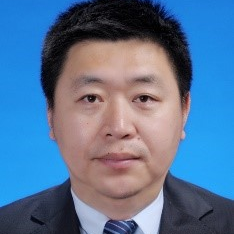Microstructure and Performance Evolution Behavior of Materials under Non-equilibrium Solidification Conditions
A special issue of Materials (ISSN 1996-1944). This special issue belongs to the section "Metals and Alloys".
Deadline for manuscript submissions: closed (20 May 2022) | Viewed by 1298
Special Issue Editors
Interests: metals and alloys; advanced composites; melting and solidification; additive manufacturing
Special Issue Information
Dear Colleagues,
Nowadays, high-entropy alloys have been in focus in scientific research as a kind of novel material. As an ancient and advanced technology, solidification plays a very important role in the preparation and forming of these advanced materials. For example, titanium alloys can be smelted to prepare alloy ingots, high-quality titanium alloy powder can be prepared by atomization, and alloy components can be prepared by additive manufacturing methods.
This Special Issue focuses on metallic materials and their composites, studying the influence of the solidification behaviors on the alloy compositions and solidification structures, under different solidification conditions, solidification speeds and melt scales. We aim to study the evolution laws of solidification structures, explore the effect of the solidification process on material properties, and reveal the importance of solidification in the process of material preparation and forming. We kindly invite researchers to contribute to this Special Issue.
Prof. Dr. Liang Wang
Dr. Nana Guo
Guest Editors
Manuscript Submission Information
Manuscripts should be submitted online at www.mdpi.com by registering and logging in to this website. Once you are registered, click here to go to the submission form. Manuscripts can be submitted until the deadline. All submissions that pass pre-check are peer-reviewed. Accepted papers will be published continuously in the journal (as soon as accepted) and will be listed together on the special issue website. Research articles, review articles as well as short communications are invited. For planned papers, a title and short abstract (about 100 words) can be sent to the Editorial Office for announcement on this website.
Submitted manuscripts should not have been published previously, nor be under consideration for publication elsewhere (except conference proceedings papers). All manuscripts are thoroughly refereed through a single-blind peer-review process. A guide for authors and other relevant information for submission of manuscripts is available on the Instructions for Authors page. Materials is an international peer-reviewed open access semimonthly journal published by MDPI.
Please visit the Instructions for Authors page before submitting a manuscript. The Article Processing Charge (APC) for publication in this open access journal is 2600 CHF (Swiss Francs). Submitted papers should be well formatted and use good English. Authors may use MDPI's English editing service prior to publication or during author revisions.
Keywords
- solidification behavior
- structure evolution
- phase and substructure
- mechanical properties







